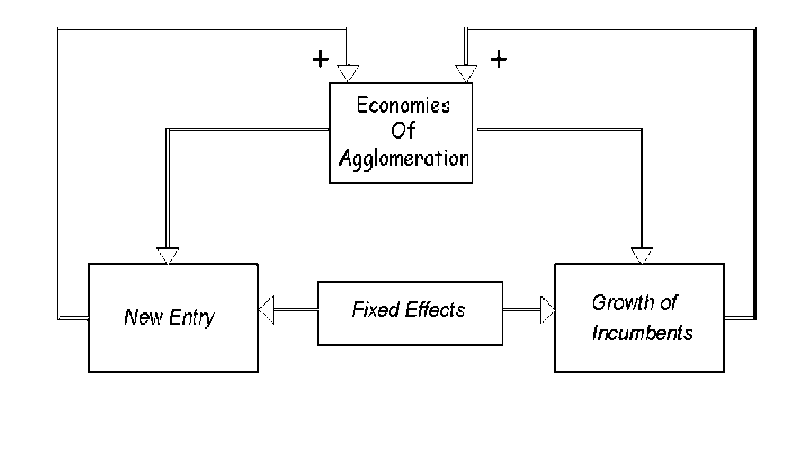Appendix 1: An Overview of the Theoretical Basis of the Survey Designs
Cluster theory maintains that a firm may be attracted to a cluster because of “fixed
effects” (Swann et al., 1998). These are benefits that exist at a location that are not a
function of the co-presence of related firms and institutions and include, for example,
climate, time-zone and cultural capital. These lead to cluster growth - new firms are
formed and incumbent firms grow. Beyond fixed effects, there are benefits that are directly
related the co-presence that exists within a cluster and these can be referred to as economies
of agglomeration. These lead to further cluster growth and can be dynamic in that they
increase as agglomeration increases. Hence the feedback loops in Figure A1.
Figure A1: Cluster Dynamics

From the perspective of the clustered company, cluster benefits can emanate on the
demand or supply side. Also, costs associated with clustering can emanate on the demand
or supply side. Generally, when benefits are greater than costs, the cluster grows
(incumbent companies grow and new companies are formed); when costs are greater than
the benefits, a cluster declines (Table A1).
44
More intriguing information
1. SAEA EDITOR'S REPORT, FEBRUARY 19882. Olive Tree Farming in Jaen: Situation With the New Cap and Comparison With the Province Income Per Capita.
3. Name Strategy: Its Existence and Implications
4. Demographic Features, Beliefs And Socio-Psychological Impact Of Acne Vulgaris Among Its Sufferers In Two Towns In Nigeria
5. For Whom is MAI? A theoretical Perspective on Multilateral Agreements on Investments
6. Synchronisation and Differentiation: Two Stages of Coordinative Structure
7. Developmental Robots - A New Paradigm
8. Ongoing Emergence: A Core Concept in Epigenetic Robotics
9. Fighting windmills? EU industrial interests and global climate negotiations
10. Research Design, as Independent of Methods